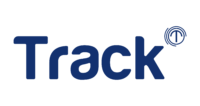To Konica Minolta, a leading provider of digital workplace services, commercial and industrial printing, and optical systems for industrial use, adaptability and innovation are key to staying ahead of the curve. They have been making waves with their strategic shift from traditional field-centric operations to a remote-first approach.
Konica Minolta’s transformation began by recognizing the need to modernize their service delivery model. With a vision to optimize efficiency, enhance customer experience, and future-proof their operations, the company embarked on a transformative journey, empowered by IFS’s Planning and Scheduling Optimization (PSO) solution. Transitioning from shift-left strategy towards a remote-first model, Konica Minolta set out to redefine their approach to service delivery to align with evolving market demands and technological advancements, providing valuable insights for organizations seeking to propel their field service management into the future.
Key Objective: Fix over 50% of service tickets remotely
Konica Minolta’s goal of fixing over half of their service tickets remotely will help them reduce the reliance on costly on-site visits (truck rolls), ranging from €50 to €100 per visit, with additional costs for spare parts.
Transforming productivity with initial improvements of 20-25%
Konica Minolta observed varying levels of automated scheduling maturity across the 770 engineers in 5 different countries where the solution is implemented. Notably, their initial productivity has improved by approximately a quarter, validating their future-ready strategy, and enhancing operational efficiency.
The company has also observed a 17% increase in closed incidents per technician shift compared to 2022, indicating an improved efficiency in resolving customer issues.
Enhancing Customer Experience
Konica Minolta aims to increase the percentage of incidents automatically planned by the scheduling tool from the current 57% to 80+%.
This will help improve service levels without increasing resource allocation, allowing exception handlers to focus on higher value tasks for customers, whilst only dealing with scheduling issues when they arise.
In addition, the company experienced a 21% increase in Service Level Agreement (SLA) achievement, further helping to improve customer satisfaction and reduced downtime.
The impact on Sustainability
The transition to a remote-first strategy has already had a positive impact on Konica Minolta’s sustainability. While specific CO2 emissions reduction numbers aren’t provided, the company recorded a reduction in travel time of two minutes per incident in the third quarter. With approx. 24,000 truck-rolls, this translates to significant fuel and emissions savings, showing Konica Minolta’s commitment to sustainability.
SOURCE: READ A. (2024, MAY 14). FROM FIELD-CENTRIC TO REMOTE BY DEFAULT STRATEGY: KONICA MINOLTA’S AUTOMATION & AI JOURNEY AND BUSINESS VALUE . IFS BLOG. https://blog.ifs.com/2024/05/from-field-centric-to-remote-by-default-strategy-konica-minoltas-automation-ai-journey-and-business-value/.

